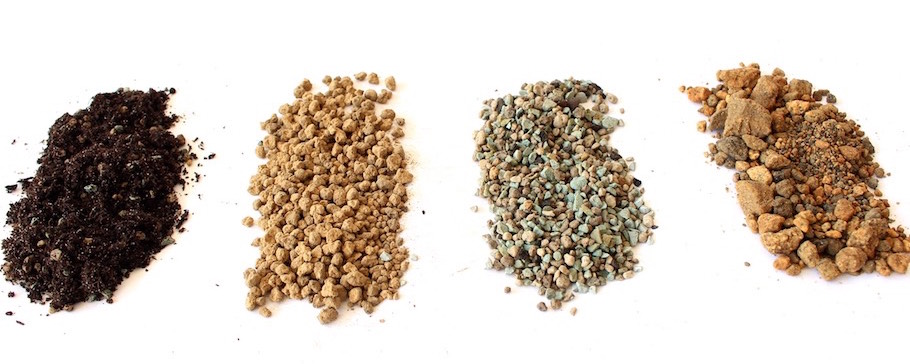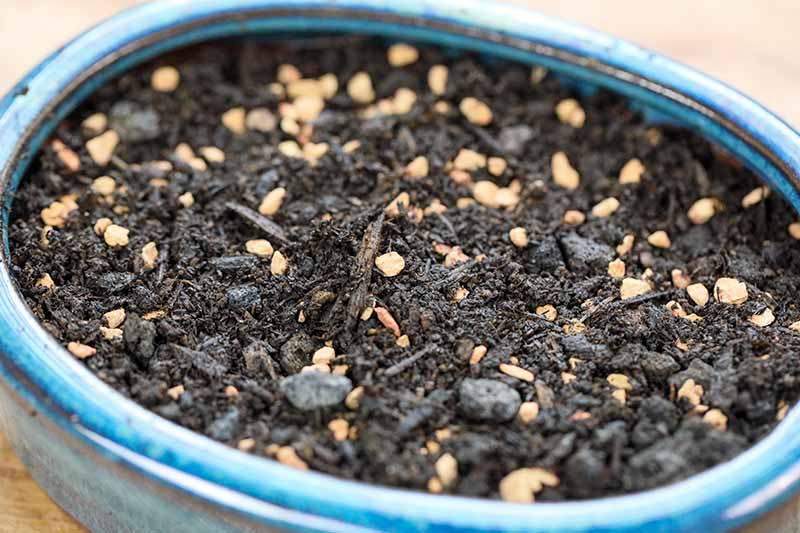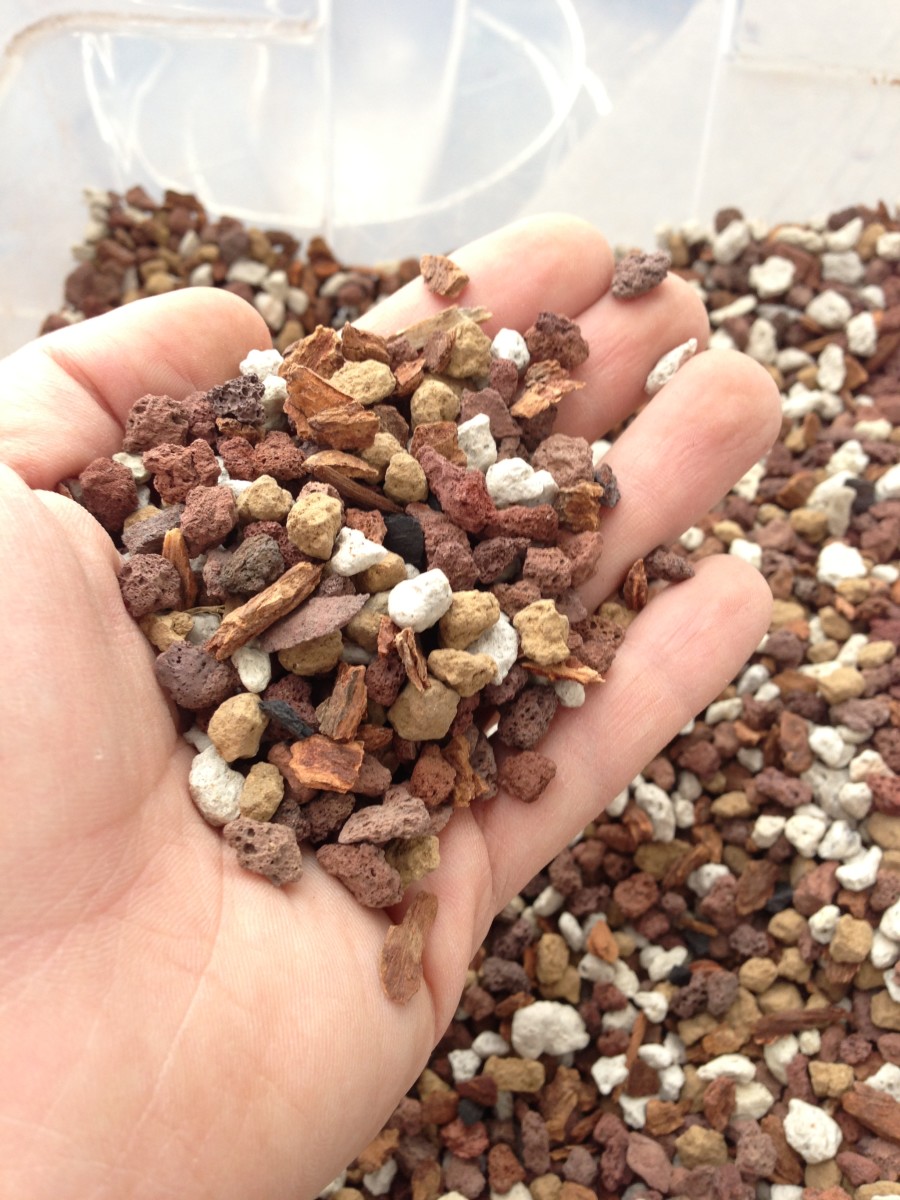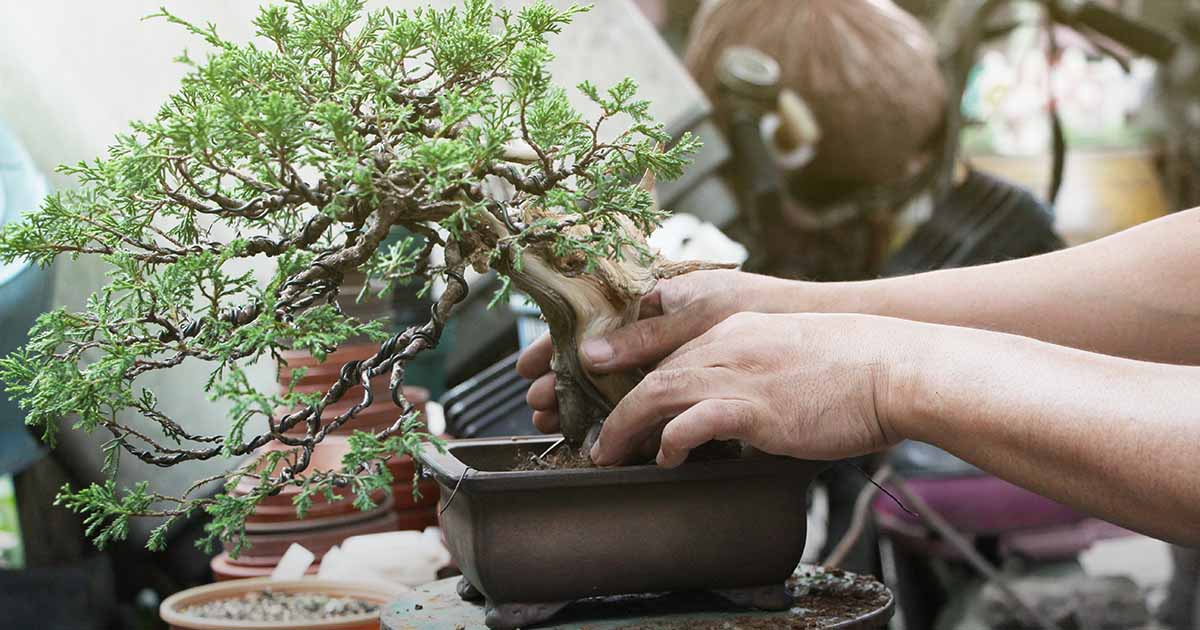The best Side of Akadama bonsai soil
If you've ever been captivated by the art of bonsai, you may well be questioning if Specific soil is needed to cultivate these miniature masterpieces. The solution is yes! Particular soil is important for the wellness and vitality of bonsai trees.On this page, we will explore the different sorts of soil and substrates Employed in bonsai cultivation, including natural and organic and inorganic possibilities.
We are going to also discover advisable soil mixtures for a variety of bonsai species, including deciduous, coniferous, and indoor varieties. From akadama and pumice to moss and river sand, we'll dive into your interesting planet of bonsai soil and help you realize why It is an essential Section of cultivating these exquisite trees.

Bonsai soil
What is bonsai soil?
Bonsai soil is a specialized type of soil that is specifically formulated for growing and maintaining bonsai trees. Unlike regular garden soil, bonsai soil is well-draining and provides the necessary nutrients and moisture balance for the tree's root system. The composition of bonsai soil is carefully designed to meet the unique needs of bonsai trees, ensuring their health and longevity.
The importance of bonsai soil
The choice of soil plays a crucial role in the success of your bonsai tree. The right soil provides optimal drainage, allowing excess water to flow freely and preventing root rot. It also promotes a healthy and well-developed root system, which is essential for the overall health and growth of the tree. Bonsai soil retains moisture while allowing air to reach the roots, striking the perfect balance for the tree's needs. Choosing the right bonsai soil is essential for maintaining a healthy and thriving bonsai tree.
Bonsai substrates
What are bonsai substrates?
Bonsai substrates refer to the different materials that can be used to create the ideal soil composition for bonsai trees. These substrates are carefully chosen to meet the specific needs of different species of bonsai trees and to ensure proper water drainage and nutrient availability.
Different types of bonsai substrates
There are various types of bonsai substrates available, each with its own unique characteristics and benefits. Some common bonsai substrates include:
- Organic materials: These include ingredients such as bark, peat moss, and coconut coir. Organic substrates help retain moisture and provide essential nutrients to the bonsai tree.
- Inorganic resources: These contain elements like pumice, lava rock, and akadama. Inorganic substrates offer superb drainage, ensuring that surplus water doesn't accumulate around the roots on the bonsai tree.
- Soil amendments: These are definitely substances which have been extra towards the soil mixture to boost its Homes. Samples of soil amendments consist of perlite, vermiculite, and sand. They improve the soil's aeration, drinking water-Keeping capacity, and nutrient availability.
By understanding the different types of bonsai substrates as well as their Attributes, you could pick out the best suited one particular on your bonsai tree's requirements.
Natural or Inorganic Soils
Natural and organic soils for bonsai
Natural and organic soils for bonsai are composed of purely natural products for example bark, peat moss, coconut coir, and compost. These resources give a abundant supply of nutrients with the bonsai tree and market healthful root advancement. Organic soils also have good water retention Houses, guaranteeing the tree gets sufficient dampness in between watering sessions. However, it is important to note that natural soils may well stop working over time and become compacted, bringing about very poor drainage and opportunity root problems.
Inorganic soils for bonsai
Inorganic soils for bonsai include resources like pumice, lava rock, akadama, and soil amendments like perlite or vermiculite. These materials have exceptional drainage properties, protecting against waterlogged soil and advertising and marketing aeration round the roots. Inorganic soils are preferred by quite a few bonsai enthusiasts due to their longevity and ability to provide a steady natural environment for your bonsai tree's root procedure. Nonetheless, They could need a lot more Regular watering and additional fertilization, as they do not keep just as much moisture or nutrients as organic soils.
Benefits and drawbacks of employing organic and inorganic soils for bonsai
Deciding on concerning organic and inorganic soils on your bonsai tree depends upon a variety of elements, such as the unique species of tree, your climate, and personal preferences. Allow me to share the pros and cons of every:
Organic and natural soils:
- Execs: Offer nutrients, fantastic drinking water retention, endorse balanced root improvement.
- Downsides: May well break down with time, likely for inadequate drainage Otherwise adequately managed.
Inorganic soils:
- Execs: Great drainage, long-lasting, stable setting for roots.
- Negatives: Less water retention, may well call for more Repeated watering and fertilization.
By considering the positives and negatives of both equally natural and organic and inorganic soils, you can also make an educated decision based upon the precise needs of your bonsai tree.
Soil elements
Important elements of bonsai soil
Bonsai soil is often composed of a few most important factors: grit, organic subject, and clay. These elements function collectively to develop The best soil composition with the bonsai tree's root procedure.
- Grit: Grit, like sand or perlite, gives drainage and aeration in the soil. It helps avoid waterlogging and permits air to reach the roots.
- Natural and organic issue: Natural and organic make any difference, which include compost or bark, supplies nutrients to the bonsai tree. Additionally, it will help retain dampness and Increase the soil's Over-all construction.
- Clay: Clay particles supply some drinking water retention characteristics and help bind the soil with each other. Nonetheless, too much clay can cause inadequate drainage and compaction.
Part of every soil element
Just about every soil element plays a vital job in developing a well-well balanced and balanced natural environment for that bonsai tree's roots.
- Grit: Grit provides the mandatory drainage and aeration while in the soil. It helps prevent the roots from sitting down in stagnant drinking water, reducing the chance of root rot and selling All round root overall health.
- Organic issue: Organic make a difference delivers important nutrients to the bonsai tree. It aids in dampness retention and contributes to the overall construction of the soil.
- Clay: Clay particles assistance bind the soil jointly and supply some h2o retention potential. Having said that, it is vital to stability the amount of clay to stay away from difficulties like very poor drainage and compaction.
By knowledge the roles of each and every soil ingredient, it is possible to produce a well balanced bonsai soil combine that meets the specific wants of one's tree.

Recommended Bonsai soil mixtures
Common bonsai soil mixtures
There are several common bonsai soil mixtures that have been proven effective for various types of bonsai trees. These mixtures typically consist of a combination of inorganic substrates, organic matter, and soil amendments.
Some of the commonly used bonsai soil mixtures include:
- Akadama, pumice, and lava rock: This mixture is popular among bonsai enthusiasts for its excellent drainage and water retention properties.
- Akadama, lava rock, and natural issue: This combination combines some great benefits of inorganic substrates While using the nutrient-rich Qualities of organic subject.
- Pumice, perlite, and bark: This mixture gives very good drainage and aeration while retaining some moisture and giving nutrients.
These are typically just some samples of bonsai soil mixtures, and The perfect combination will depend upon the precise wants of your respective bonsai tree as well as your climate.
Variables to take into consideration when picking out a bonsai soil combination
When selecting a bonsai soil combination, it is important to take into account the following variables:
- Species of bonsai tree: Diverse species have distinct humidity and nutrient demands. Exploration the precise requirements within your tree to pick out a soil combination that satisfies its necessities.
- Climate: The local climate you live in can affect the humidity retention Homes on the soil. Think about the ordinary humidity and temperature in your neighborhood when choosing a soil mixture.
- Watering behaviors: Your personal watering behaviors and regime should really align Together with the soil combination you decide on. Some mixtures have to have far more frequent watering, while others keep moisture for for a longer period durations.
- Finances: Some soil elements may be more expensive than others. Look at your spending plan when picking out a soil mixture.
By getting these elements under consideration, you can go with a bonsai soil mixture that gives the best escalating situations to your tree.
Deciduous Bonsai soil
Greatest soil composition for deciduous bonsai
Deciduous bonsai trees, like maple or birch, have certain soil prerequisites to aid their expansion and wellbeing. The most effective soil composition for deciduous bonsai generally features a mixture of natural subject, inorganic substrates, and soil amendments.
A encouraged soil composition for deciduous bonsai might include things like:
- Akadama: Gives fantastic water retention when making it possible for for drainage. Additionally, it releases nutrients slowly after some time.
- Pumice: Encourages aeration and drainage while in the soil, stopping waterlogging.
- Bark or peat moss: Adds natural and organic subject into the soil, offering nutrients and dampness retention.
This soil composition makes certain that the roots of deciduous bonsai trees acquire the correct harmony of moisture, nutrients, and oxygen for optimal advancement.

Coniferous and Pine soil
Ideal soil mixture for coniferous and pine bonsai
Coniferous and pine bonsai trees have specific soil requirements due to their water retention needs and preference for acidic soil. An ideal soil mixture for coniferous and pine bonsai should provide good drainage while retaining moisture and maintaining the desired pH level.
A recommended soil mixture for coniferous and pine bonsai may include:
- Akadama: Provides excellent water retention while allowing for sufficient drainage. It releases nutrients slowly over time.
- Pumice: Encourages aeration and drainage within the soil, avoiding waterlogged roots.
- Peat moss: Adds organic make any difference and acidity to the soil, making a great pH level for coniferous and pine trees.
This soil mixture ensures that the roots of coniferous and pine bonsai trees acquire the right equilibrium of humidity, nutrients, and acidity for his or her distinct wants.
Akadama
What exactly is akadama?
Akadama is a form of clay soil that is widely Utilized in bonsai cultivation. It really is noted for its great drinking water retention Qualities, which make sure a gentle supply of dampness on the bonsai tree's roots. Akadama is usually prized for its ability to launch nutrients slowly but surely as click here time passes, providing a consistent supply of nourishment to the tree.
Great things about working with akadama in bonsai soil
Employing akadama in bonsai soil delivers various Positive aspects:
- H2o retention: Akadama has Remarkable water retention Qualities, making it possible for it to carry humidity with out turning out to be waterlogged. This makes sure that the bonsai tree's roots receive a constant offer of water, selling healthful progress.
- Nutrient launch: Akadama bit by bit releases nutrients into the soil after a while, providing a steady source of nourishment to the bonsai tree. This cuts down the necessity for Recurrent fertilization and allows manage a balanced nutrient profile.
- Aeration: Regardless of its drinking water retention capabilities, akadama also delivers enough aeration to the bonsai tree's roots. It will allow air to reach the root program, protecting against troubles like root rot on account of lack of oxygen.
By incorporating akadama into your bonsai soil, it is possible to generate an best increasing surroundings to your tree, ensuring its wellbeing and vitality.

Lava rock
How lava rock benefits bonsai soil
Lava rock is a popular click here component in bonsai soil mixtures due to its excellent drainage and aeration properties. It is typically used in conjunction with other substrates to create the ideal soil composition for bonsai trees.
The benefits of lava rock in bonsai soil include:
- Drainage: Lava rock provides excellent drainage, preventing waterlogging and ensuring that excess water flows freely through the soil. This helps prevent root rot and provides a healthy environment for the roots to thrive.
- Aeration: The porous nature of lava rock will allow air to flow into within the soil, giving oxygen towards the bonsai tree's root system. Appropriate aeration is important for healthy root development and General tree development.
- Longevity: Lava rock is actually a tough content that doesn't break down simply. This makes sure that the soil structure remains secure after some time, minimizing the need for frequent soil replacements.
Lava rock is obtainable in numerous dimensions and designs, permitting for personalisation according to the particular requirements within your bonsai tree and soil specifications.
Differing types of lava rock
There are differing types of lava rock that could be Employed in bonsai soil mixtures, like:
- Black lava rock: Black lava rock is usually a usually used material in bonsai soil mixtures. It offers exceptional drainage properties and provides an aesthetic element to the overall presentation on the bonsai tree.
- Purple lava rock: Pink lava rock is yet another well-liked decision in bonsai soil mixtures. It provides related drainage and aeration Added benefits as black lava rock but has a definite reddish colour that provides Visible curiosity into the container.
The two black and pink lava rocks are widely accessible and may be simply integrated into your bonsai soil combination.
Potting
Essential guidelines for profitable bonsai potting
Potting is often a vital procedure in bonsai cultivation, because it immediately impacts the overall health and progress with the tree's roots. Below are a few important strategies for profitable bonsai potting:
- Choose the ideal pot size: Choose a bonsai pot that allows for root development whilst nonetheless furnishing a snug healthy. Stay clear of pots that are too big, as they can lead to excessive soil humidity and weak root advancement.
- Use bonsai wire: Safe the tree while in the pot employing bonsai wire to ensure security. This stops the tree from shifting or turning out to be uprooted for the duration of watering or sturdy winds.
- Trim and unfold the roots: Just before potting the bonsai tree, thoroughly trim and spread out the roots. This encourages outward development and helps prevent root tangling or root-certain troubles.
- Incorporate mesh screens: Area mesh screens about the drainage holes at The underside on the pot to avoid soil erosion and be certain correct drainage.
- Use fresh bonsai soil: When potting, constantly use clean bonsai soil to offer the required nutrients and optimum growing disorders for your roots.
By adhering to these critical recommendations, you may make sure a successful potting system and boost the overall well being and advancement of your respective bonsai tree.
The function of bonsai pots in soil dampness Regulate
Bonsai pots Enjoy a crucial role in soil humidity Handle, straight impacting the health and fitness and expansion from the tree. Bonsai pots are generally shallow and possess drainage holes, allowing excessive water to escape and stopping the soil from becoming waterlogged.
The look of bonsai pots promotes evaporation and air circulation, which can help regulate soil humidity stages. The shallow depth and wide opening from the pot expose additional area spot from the soil into the air, aiding in dampness evaporation. This helps prevent the roots from sitting in excessively wet soil, minimizing the risk of root rot and other drinking water-related concerns.
Additionally, the drainage holes in bonsai pots enable any excess h2o to escape, protecting against waterlogged soil and marketing aeration within the roots. Appropriate aeration is important for the wellness and development of the foundation system, guaranteeing the bonsai tree receives the required oxygen for advancement.
By utilizing bonsai pots created for efficient dampness control, it is possible to create a good ecosystem to your bonsai tree's roots and encourage its General health and fitness and vitality.
In conclusion, deciding on the appropriate bonsai soil is vital for that success and overall health within your bonsai tree. Comprehension the different types of bonsai substrates, the purpose of natural and inorganic soils, The real key elements of bonsai soil, and the different proposed soil mixtures will allow you to deliver the optimal increasing situations to your bonsai tree. Regardless of whether you do have a deciduous or coniferous bonsai, incorporating supplies like akadama and lava rock can increase the soil's drainage and nutrient availability. Also, taking note of potting procedures and employing bonsai pots created for dampness Manage will more assistance the thriving advancement of your bonsai tree. With good knowing and implementation of bonsai soil tactics, you may benefit from the elegance and artistry of bonsai cultivation For several years to come.
